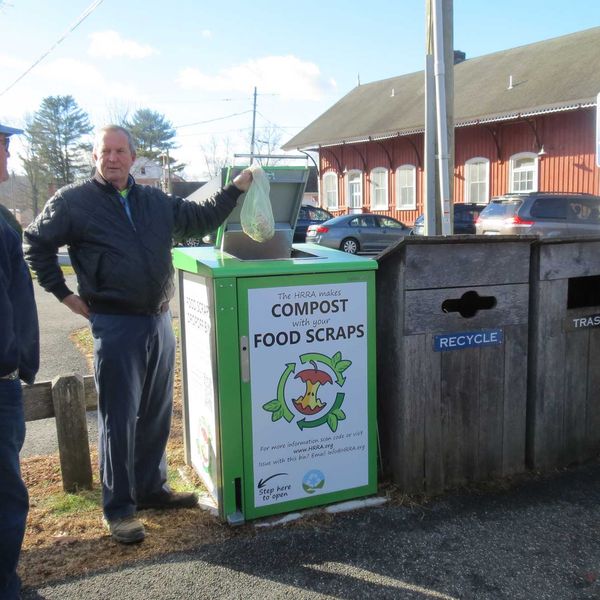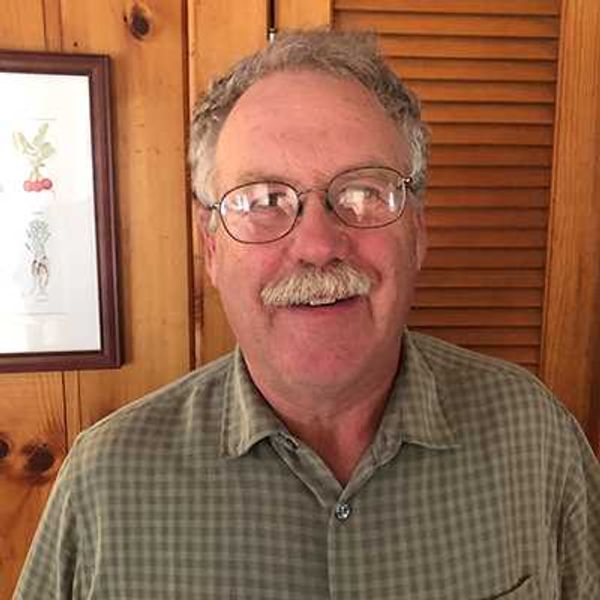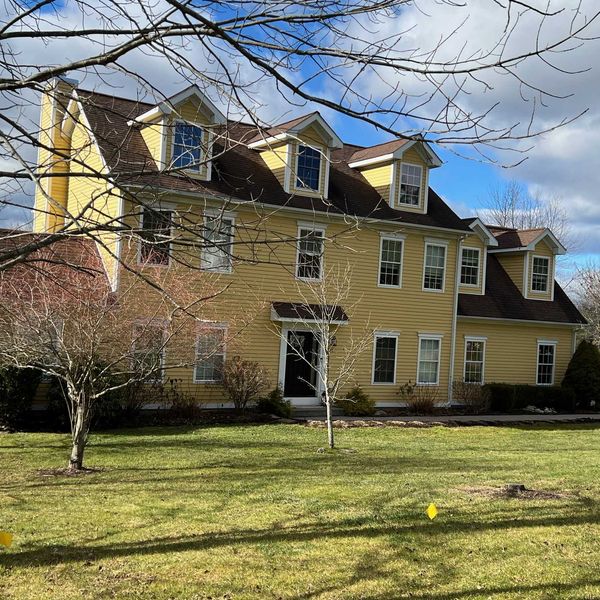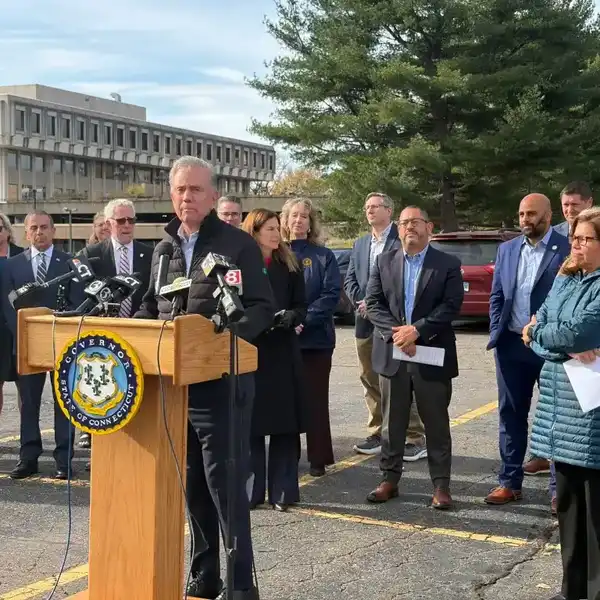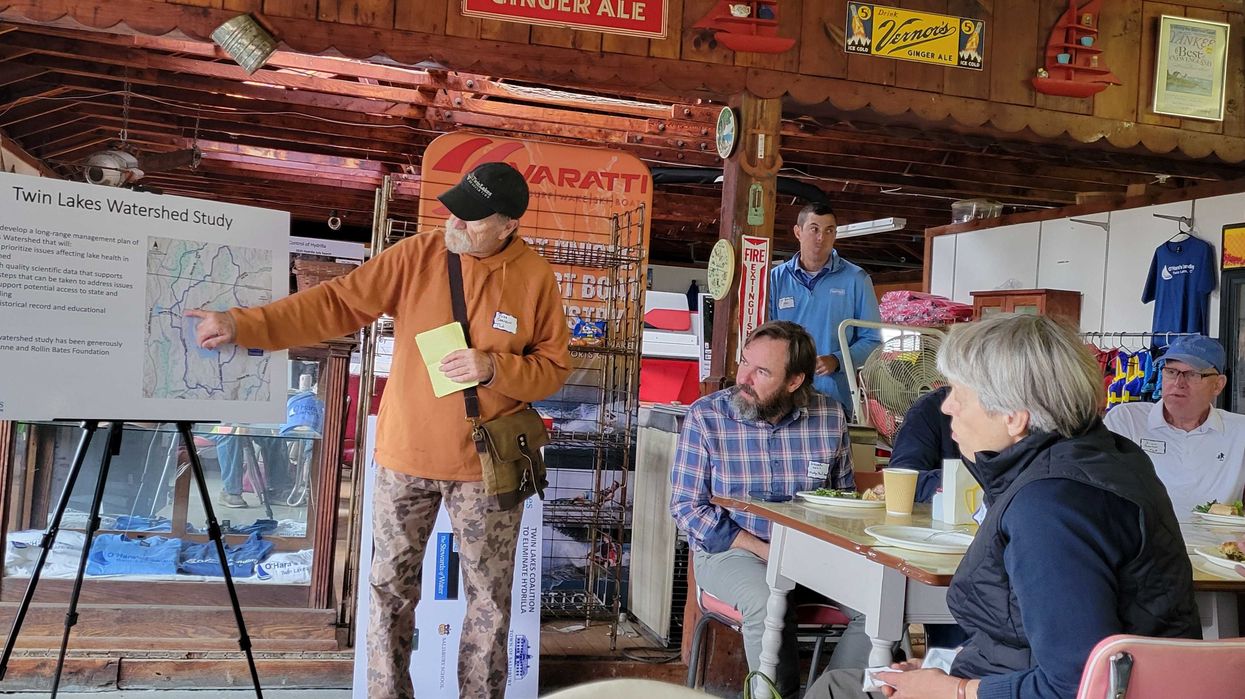
Russ Conklin, vice president of lake management for the Twin Lakes Association gave an update on hydrilla during an Oct. 8 meeting of coalition members at O’Hara’s Landing Marina. Looking on, from far right: Bill Barton, TLA vice president, Kitty Kiefer, Salisbury selectwoman, Andrew Cahill of the Mudge Pond Association and Josh Burnside (standing), field technical resource for SePRO.
Debra A. Aleksinas
 A sign warning boaters of the hydrilla threat at O’Hara’s Landing Marina stands in the location where the invasive weed was discovered at East Twin Lake in May of 2022. Debra A. Aleksinas
A sign warning boaters of the hydrilla threat at O’Hara’s Landing Marina stands in the location where the invasive weed was discovered at East Twin Lake in May of 2022. Debra A. Aleksinas
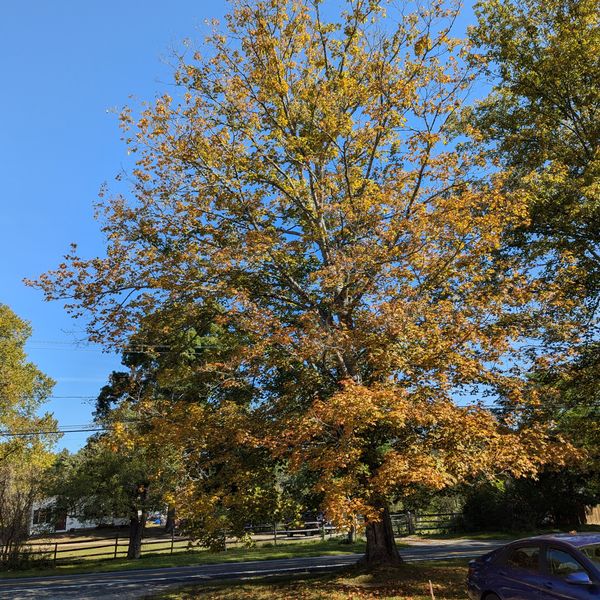
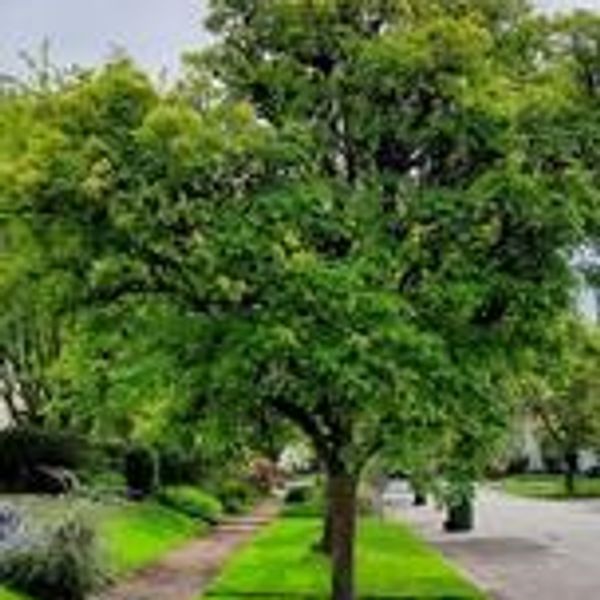
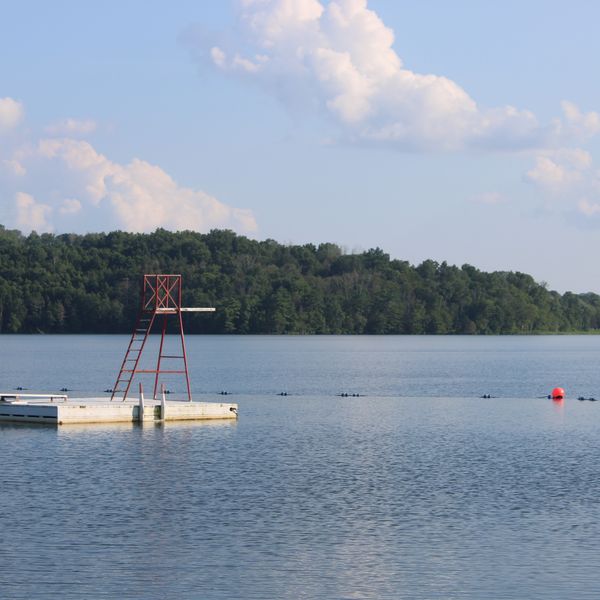
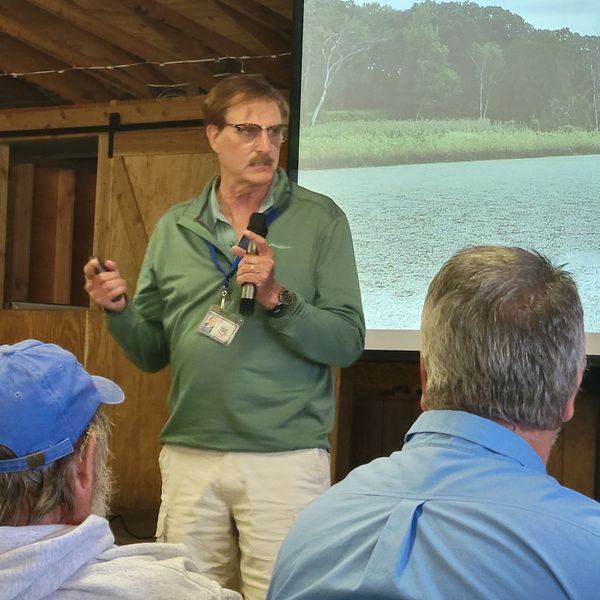
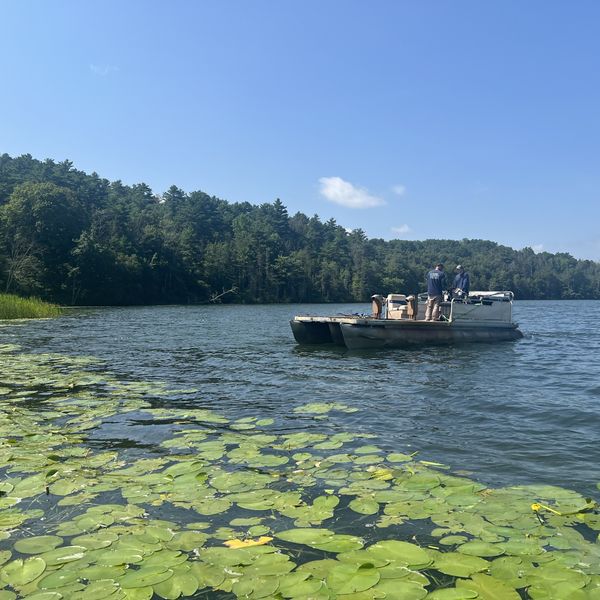
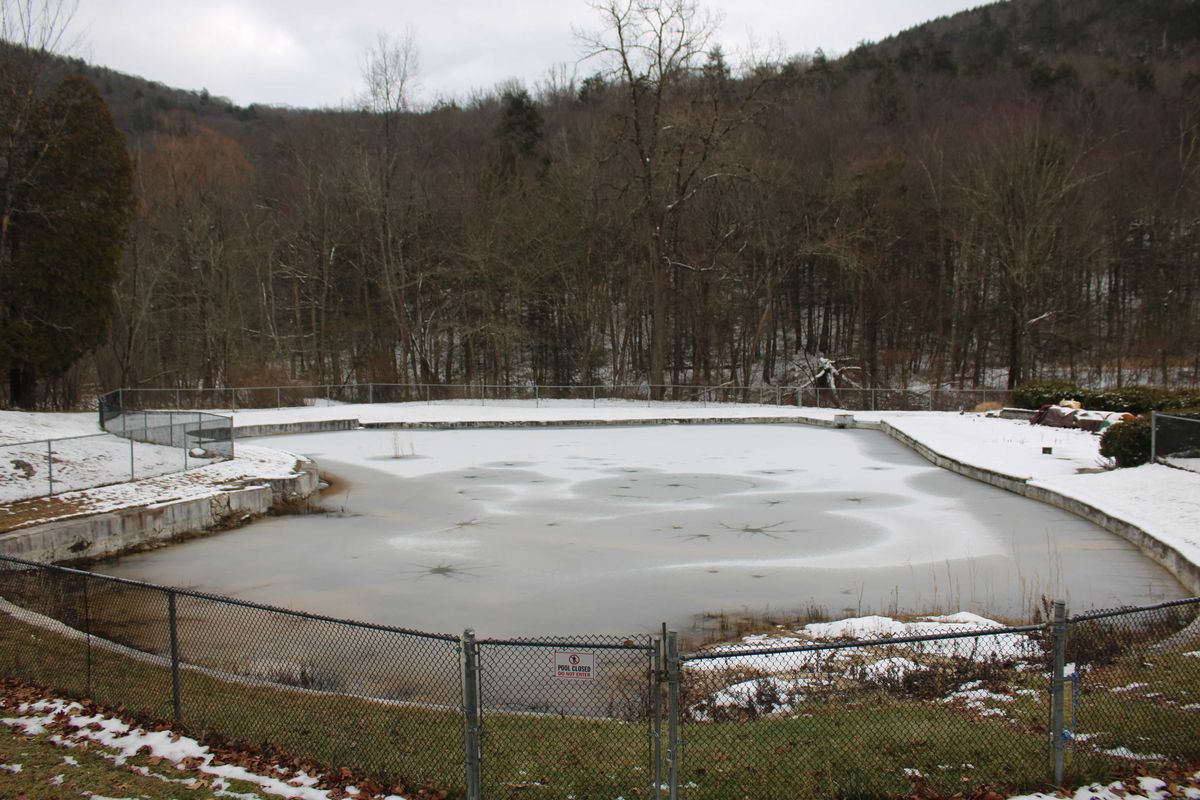

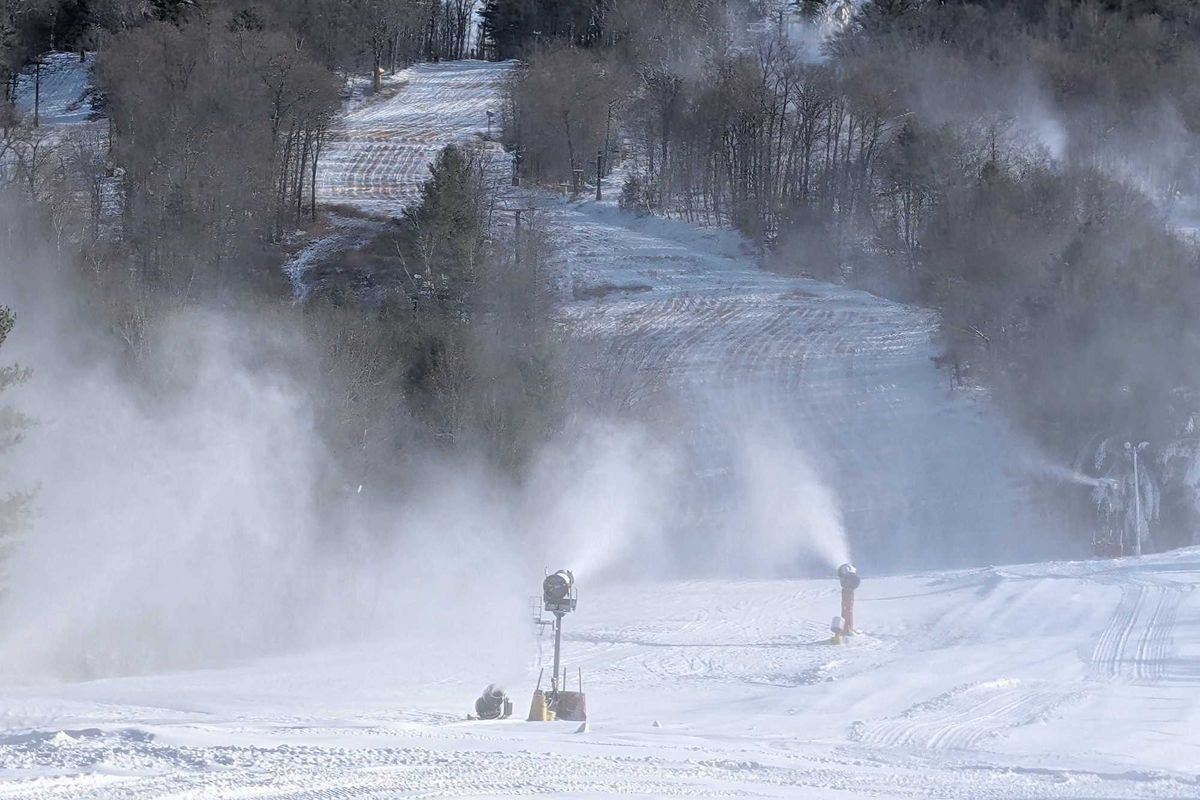
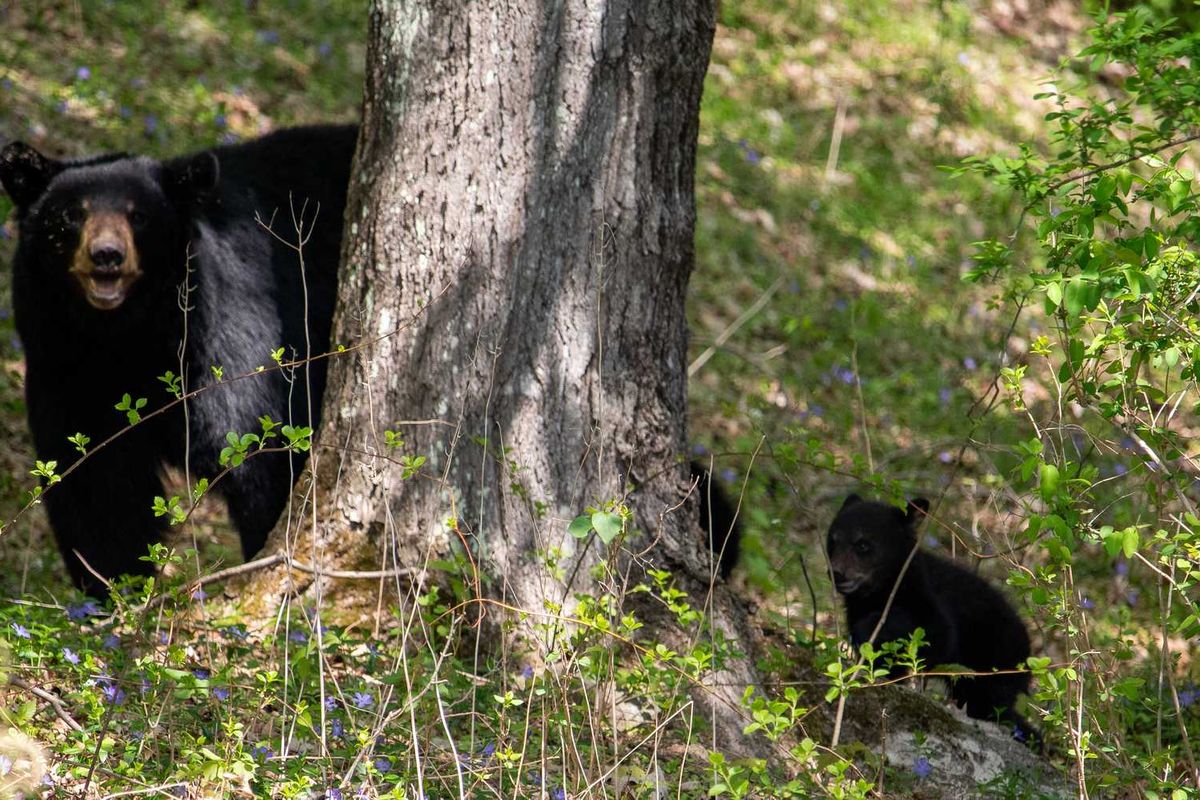
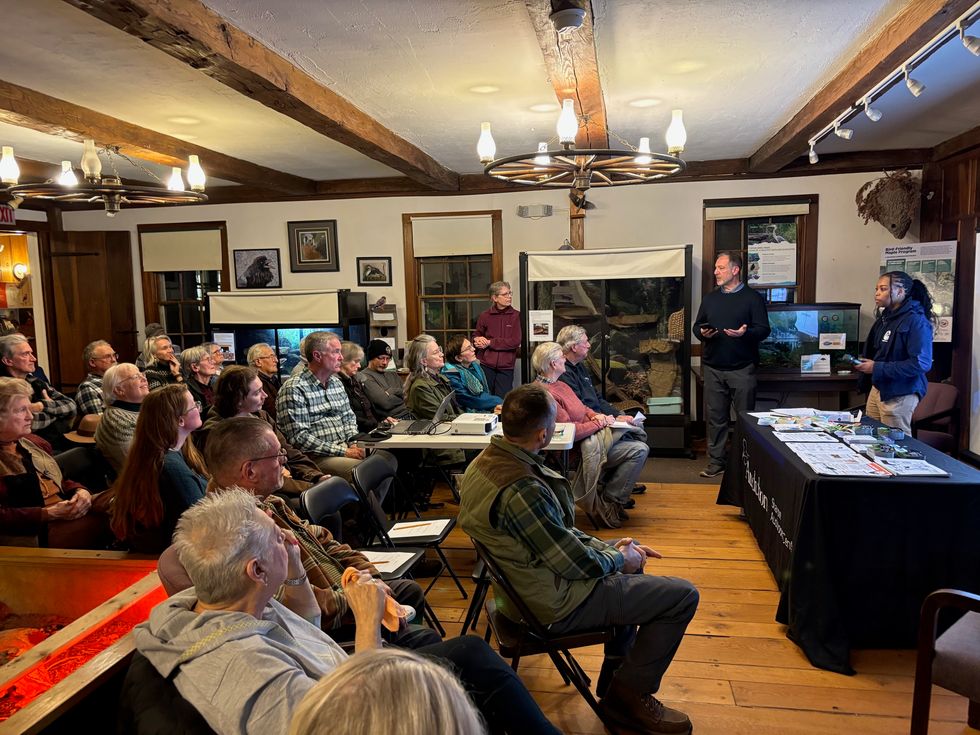 Attendees at the DEEP meeting in Sharon on Dec. 3By Christian Murray
Attendees at the DEEP meeting in Sharon on Dec. 3By Christian Murray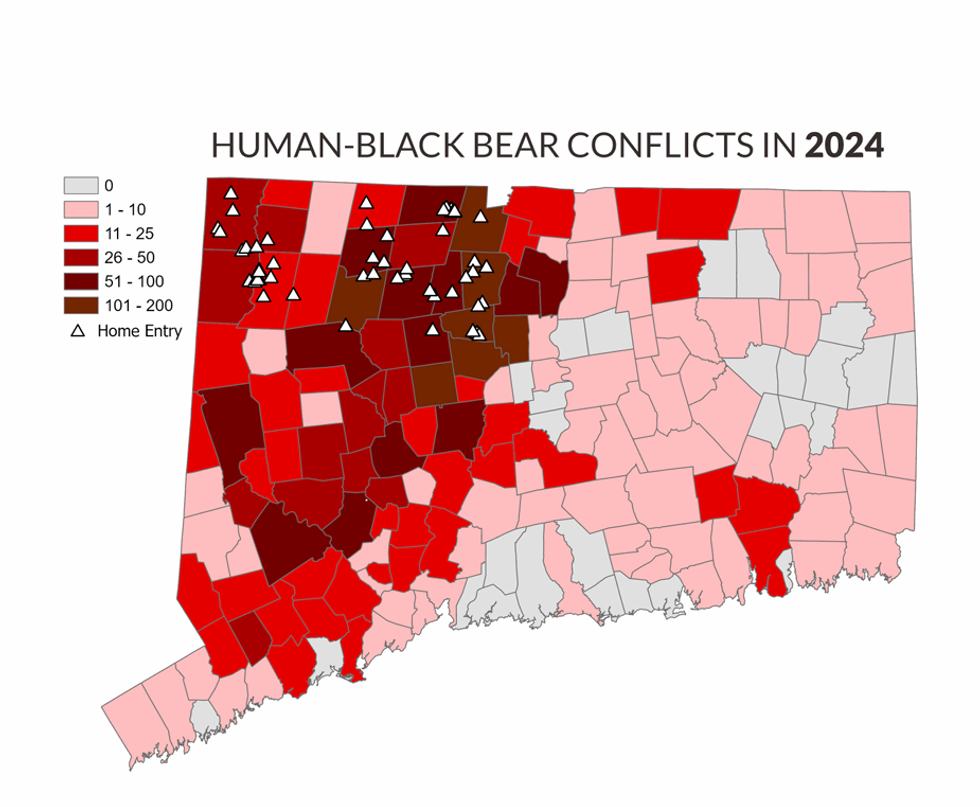 From the State of the Bears Report released March 2025CT DEEP
From the State of the Bears Report released March 2025CT DEEP